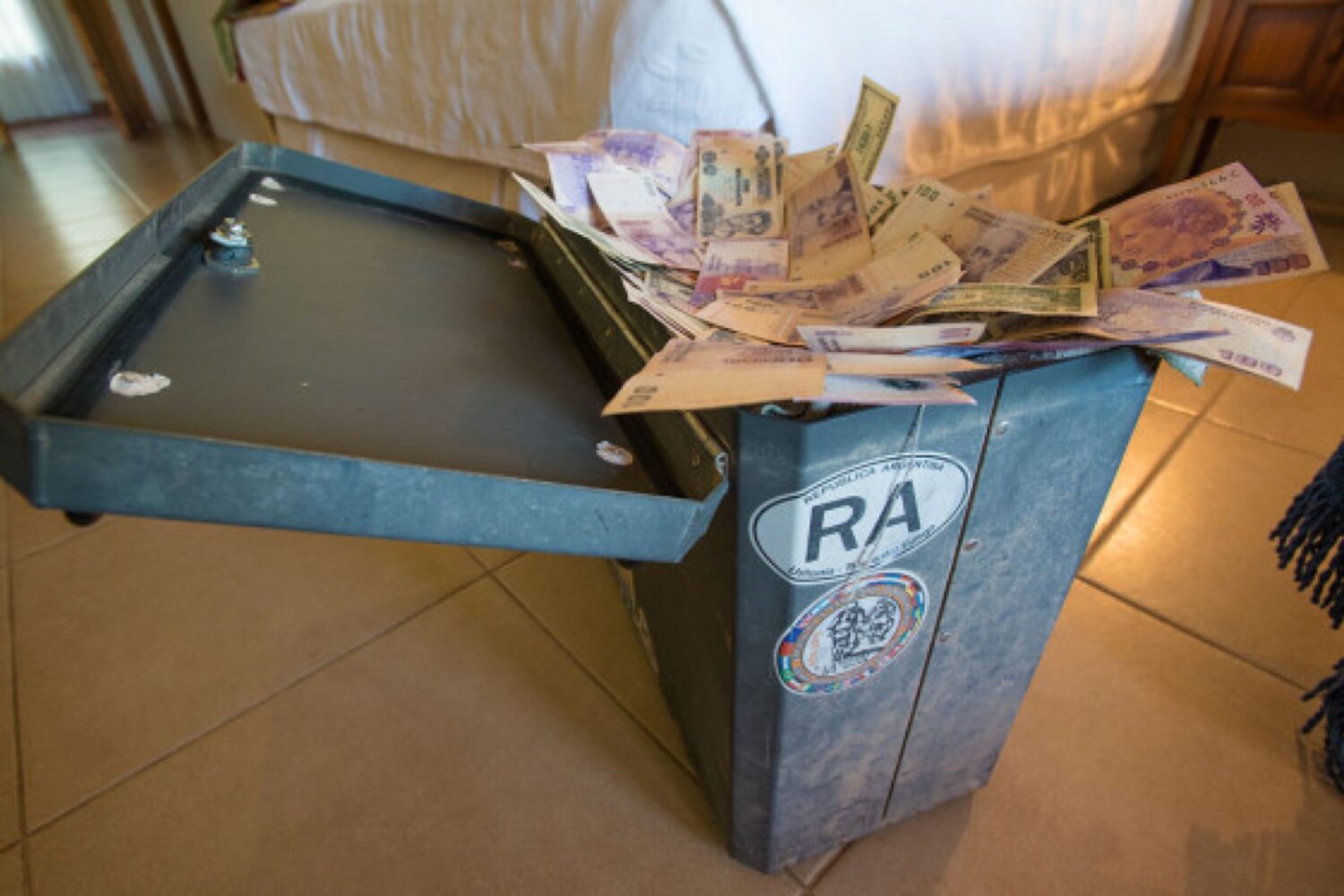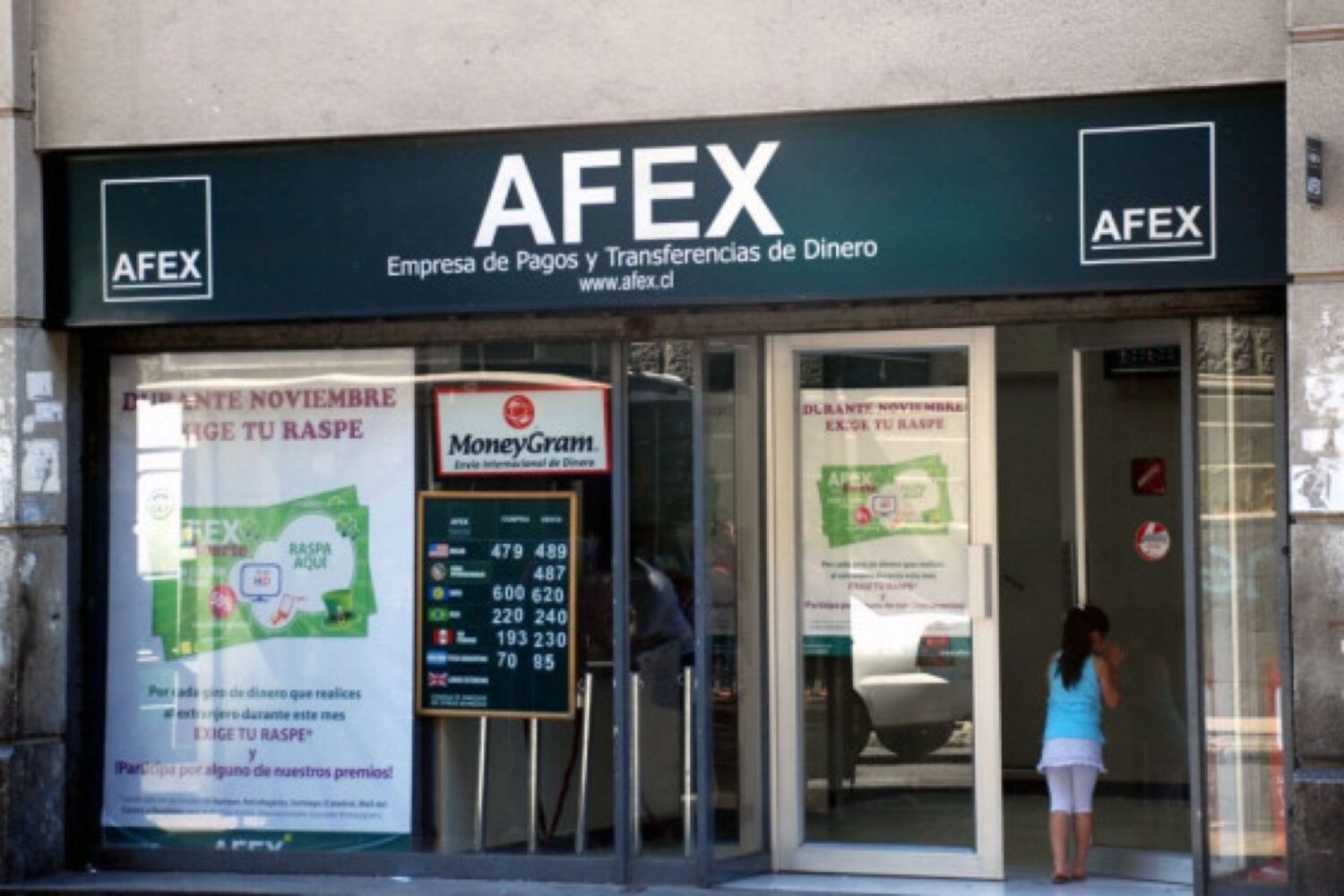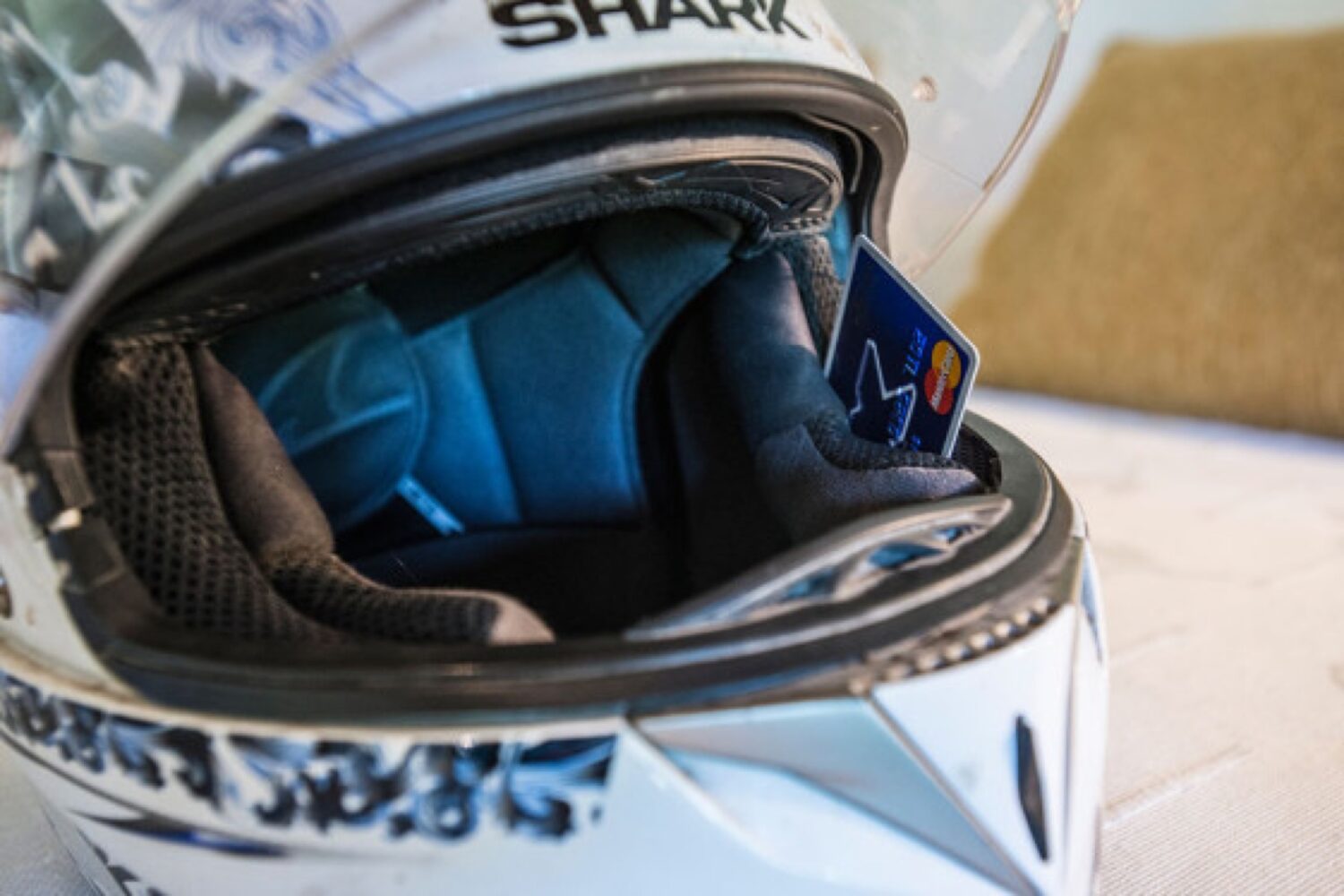Words by Lisa Morris, photography by Jason Spafford
A learned friend advised that if I were to raise funds for a big two-wheeled trip successfully, I’d have to adopt the mantra Don’t be too stupid to be poor. Being frugal is the easy part—surrendering the daily caffè latte, monthly subscription to premium television, and an annual visit to the slopes will more than kick-start the travel fund. Savouring the bigger picture of your imminent motorcycle bliss (or other adventure by vehicle) will make it surprisingly painless to sacrifice the unnecessary spend and save, save, save!

A trip can be costly enough, and returning home and looking in mute horror at your bank statement peppered with extra charges and fees after using your card abroad is a surprise you do no need. On the flip side of the coin, there are many ways to manage and optimize your dollars and cents on the road. Or perhaps it’s pounds or pesos for you. As modern travellers, we can’t simply pack the panniers with dinero in every denomination, and off we go. So what are the options?
Cash
Pros
Wad is God. Having local currency will enable you instant access to the items and services you require to stay on the road.
Cons
Carrying a stockpile of cash can be a necessary evil on longer trips, travelling from country-to-country. Realizing the risk of getting your hard-earned notes lost, stolen, or damaged could incur a painful delay to your journey and force you to stop somewhere and earn some money. Worse still, it could end the trip of a lifetime.

Tips
So, where and how is best to stash your greenbacks? Anywhere your imagination can locate that will give you peace of mind when without it. It’s shrewd to divide up your notes into small piles and stow them among different places on your person and motorcycle.
Apart from wearing a money belt, for example, vacuum-seal freezer bags from any supermarket make ideal waterproof, protective cases to house your money, especially when duct-taped onto the armoured backplate inside your motorcycle jacket. Most of the time, you’ll be wearing your motorcycle jacket and are unlikely to leave somewhere without it.
Storing discreet bags of cash in lockable panniers, a top box, or hidden inside tool containers are also going to give your hard-earned dollars heightened security. Take it a step further and create a false bottom in your pannier, top box, or toolbox.
Changing Money
Pros
When it comes to buying or exchanging money, you may get the best foreign exchange rates at your home bank. For any foreign currency left over, swap it back at your bank’s favourable rates. When overseas for extended periods, shopping around for the best rate before exchanging your dollars at the local bureau de change (often a shop, sometimes a man on the main street clutching a bag brimming with cash voicing his service) will give you far more euros, pounds, or yen for your dollar. Bartering with the money man on the street can also save you a stack of bucks.
Cons
If possible, steer clear of changing money at the airport; rates tend to be appalling. You’re a captive customer at an airport or ferry terminal and invariably subjected to atrocious rates. If forced to source currency from the airport, order ahead for pickup to get a better rate.

Tips
Carefully examine your foreign money for any counterfeit notes. You can do this by ensuring a dotted strip will turn solid when held up to the light, a clear hologram exists, or checking the quality of the paper or plastic. Note that there are many other ways to check (see link below for further information). Coins and small notes might not be accepted, so take larger denomination notes ($10 and up) if you intend to exchange cash.
It may be prudent to avoid exchanging currency at border crossings, especially while travelling through developing countries. If unpreventable, ask for low denominations and a receipt; receiving fake bills for your cash is not altogether uncommon in some poorer countries.
Mobile Wallet (aka digital wallet and e-wallet)
Digital wallet apps shift away from traditional forms of payment. They allow you to store your debit and credit cards to authorize payment on your behalf in the mobile wallet app with one tap or scan to a near-field communication (NFC) point of sale when making a digital-platform-supported transaction. (NFC is the technology behind contactless payments via mobile wallets, e.g., Android Pay, Google Pay, Apple Pay, PayPal, Venmo.)
Pros
Simplicity: A handy cash and credit card replacement that offers a seamless experience using your smartphone. You can complete the transaction without entering a single piece of information, and it limits the need to carry cash and cards on your travels.
Rewards: This lets you choose the card to make a specific purchase, e.g., a debit card to buy everyday essentials to redeem cash backor a credit card to earn air miles. Some apps let you add coupons, loyalty cards, gift cards, and reward cards.
Security: All transactions use “tokens” instead of your credit card information. When you make a purchase, banks use tokenization to determine which card to use, which means merchants will never be granted access to your credit card data. Moreover, if you lose your phone, you can instantly disable the mobile wallet or remove the cards altogether, which is more convenient than misplacing a credit card.
Peace of mind: A mobile wallet alleviates the problem of leaving your card behind somewhere. Even when your phone gets lost or stolen, you’ve got passwords and biometrics to restrict access only to you. Many mobile wallets are cloud-based, further protecting your data and making it securely accessible. Some wallets, such as DL Wallet, are based on an immutable ledger that records every transaction in a frictionless, secure, and tamper-proof way.
Fraud prevention: As the data stored in your mobile wallet is encrypted—unlike cards that can be stolen or duplicated—it’s nigh impossible for cyber-criminals to access the information to make fraudulent purchases.
Adoption: Practically every smartphone on the market today supports a mobile wallet app, and banks are increasingly joining their support.
Cons
Availability: Not every country supports mobile wallet transactions.
Acceptability: Not all companies and online businesses accept digital wallet transactions.
Costs: Some mobile wallets have a charge attached for some functions and transactions. For instance, reloading a prepaid card from differing sources such as a credit card.
Security concerns: Due to online scamming and cyber-fraud, there’s a perception that a stranger can easily access their banking information, which leads to some feeling exposed when using their smartphone (connected to a bank account and, or credit card) to purchase something.
Resistance to technology: For some, the jump from traditional forms of payment of cash to mobile wallets seems too big of a leap, and they are resistant to adopt the technology.
Perceived budget challenge: Some people feel infinitely more in control of their spend with finite cash amounts. Others lack saving and budgeting skills, which may lead to buying more via a mobile wallet than a fixed physical quantity of cash to spend. However, many mobile wallets offer features to counter this mentality and feature budgeting functions and spending alerts when you are close to or have exceeded a predetermined amount.
Tips
Mobile wallets are increasingly popular in numerous developed countries. When they are accepted, they make your in-store and online transactions safe, fast, and easy without the need to carry cash or physical cards. You can pay bills and make purchases on the fly whenever a merchant accepts this form of payment. Admittedly, there’s a need for the world to catch up in recognizing your virtual wallet, which sees growing freedom to make digitized transactions wherever you go.
Credit Cards
Pros
The issuer protects every transaction you make and will refund you should anyone fraudulently attempt to make purchases with your information. There’s instant peace of mind should your plastic get lost, stolen, or damaged, and it’s always straightforward to cancel the card. This source of spend is a safe bet. The top overseas cards come with near-perfect exchange rates and no fees for purchases.

Cons
There is a high annual percentage rate (APR) of interest that you, as a credit cardholder, will be charged on all or a portion of the balance if the full amount isn’t paid on or before the due date.
Credit cards that push themselves as specialist overseas plastic are ideal for travellers, but issuers hope you’ll also use them back home, where they’re often not so competitive. Sourcing one specifically for spending abroad gives you fee-free foreign transactions, including commission-free purchases and one with a zero cash withdrawal fee, which means you’ll beat the system.
Tips
Golden rule number one: Repay in full before the due date each month to evade forking out the interest. Most credit cards add a three percent cost to the exchange rates banks themselves get. You can dodge this by packing a specialist card that doesn’t add this load; namely, you’ll get exchange rates that trump even the best bureau de change.
Carry two credit cards in case one stops working (Visa and MasterCard are generally accepted worldwide). Stow in subtle places on your person and motorcycle; slotting one into a slit in the padding of your helmet is an inconspicuous place.
Debit Card
Pros
You’ll get the same great interbank exchange rate when you make cash withdrawals with your debit card (or ATM card) as you do when you make a credit card purchase. Unlike a credit card, a debit card isn’t allowed to charge a fee when buying foreign currency.
Cons
Each cash withdrawal you make on your debit card will usually be subject to currency conversion fees, foreign ATM/cash/transaction fees, or other surcharges from your bank or the local bank that maintains the ATM. Even if you don’t take out money and buy something abroad with your debit card, it can charge a Foreign Purchase Fee.
Debit cards work along the same lines as regular credit cards for purchases, but if your debit card is lost or stolen, you may not have the same level of consumer protection compared to your credit card. Big charges mean that you should avoid frequently withdrawing small amounts of cash and try to take out larger amounts less regularly, although this brings its own risks in terms of theft.
Tips
Your debit card is useful for withdrawing cash in local currency. Although you may prefer the protection of a credit card in case a cash machine has been tampered with a skimming or imaging device that can unlawfully capture your personal identification number. Using an ATM inside a bank should avoid this misdeed.
If the debit card from your home bank isn’t connected to the worldwide Cirrus or PLUS networks, you may wish to source a MasterCard or Visa debit card instead. While they look and can be used like regular charge cards, they debit your checking account the same way your debit card does.
Some debit cards have the very worst cash withdrawal fees. Do a comparison online and determine if it’s cheaper to withdraw cash from a bank/ATM abroad on a credit card (with and without a cash withdrawal fee) versus using a debit card. Overseas, my current Visa debit card charges me around 12 US dollars (across three charges per transaction) for any amount of cash withdrawn up to the daily limit, starkly contrasting to my much cheaper credit card that has a zero cash withdrawal fee.
Traveler’s Checks
Pros
Security-wise, they are completely safe and replaceable, often allowing for a full refund if they get lost or stolen. In contrast, lost cash isn’t always covered on travel insurance. Traveler’s checks are easy to use and convenient when they’re accepted at amenities such as hotels, shops, and restaurants around the globe.
Cons
Current research reveals travelers’ checks issued at major banks and currency firms frequently offer among the worst possible value on travel money, in comparison to the top credit cards for spending overseas. This is because the exchange rate on checks is often poor, while they come with high fees. Places that don’t accept traveler’s checks are likely to cause you hassle until you find somewhere that does.
Tips
Keep hold of the serial numbers in a safe place away from the checks should they get lost, stolen, or damaged.
Other Considerations
Before Leaving Home
Leaving a few blank, undated, signed checks with a trusted family member or friend might prove handy while abroad long-term in the event that you face any unforeseen costs back home. Setting up online banking with text and email alerts will help you to manage your banking, go paperless, and avoid going overdrawn. Carry, scan, or email yourself with your issuer’s international contact/other useful information before riding through foreign lands.

Credit Card Prep
If you’re prone to missing the due date on your credit card balance, it’s sometimes possible to preload your own money (above the given credit limit) onto the card quickly via internet banking, for instance. Providing the amount you push onto your card is more than the balance owed, this will buy you a handy buffer zone. It’s also beneficial for unforeseen spending that may crop up just prior to the balance’s monthly cut-off date.
Consider setting up a monthly direct debit for the guarantee of automatically repaying your credit card off in full. Settling the full balance on the last day before interest is charged will buy you up to 30 days of cash flow without ever having to pay interest.
Other Banking Prep
Understand the credit/debit card fees that apply to your overseas purchases and cash withdrawals. Whether you’re planning to use either type of card as a primary spending source or for emergencies only, it’s prudent to call the issuer before every trip. Let them know when, where and for how long you’ll be traveling. Any international activity on your account won’t result in activating your issuer’s panic button, triggering a bothersome block to your account.
Closed Currencies
A closed currency means that you can’t get it until you enter the country. If you’re visiting a country with a closed currency, you’ll need to change money on arrival. You’ll need to change it back again before leaving as you won’t be able to exchange it back home; keep your receipt from any transaction in case it’s needed. Namely, be careful not to over-withdraw when a closed currency applies so as not to lose out on the exchange rate twice.
Fake Wallet
Caution might stand you in good stead by carrying a fake wallet. In the hopefully unlikely event of getting mugged, relinquishing a false wallet with a small amount of cash inside may just satisfy the robber’s instant gratification requirements. Ensure it looks real enough by adding some recent receipts, a random company’s business card, and a couple of expired cards from your roadside coverage or the gym you no longer frequent.
Being savvy, you’ll glean your own research on current travel money. But better from the outset to be penny-wise than pound-foolish.
Resources
Best mobile payment apps in 2021 for contactless payments
Counterfeit money detection know-how
Our No Compromise Clause: We carefully screen all contributors to make sure they are independent and impartial. We never have and never will accept advertorial, and we do not allow advertising to influence our product or destination reviews.


